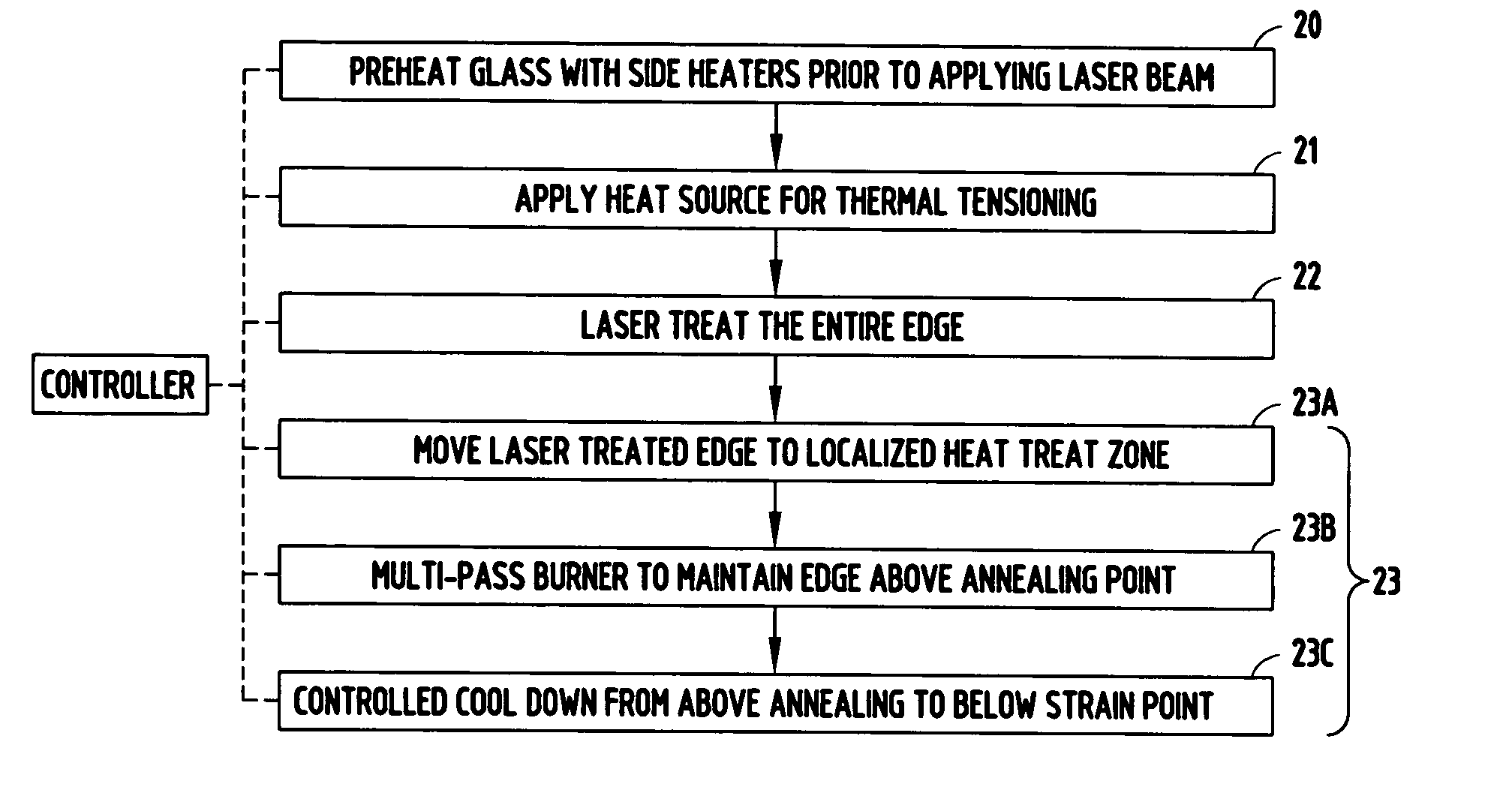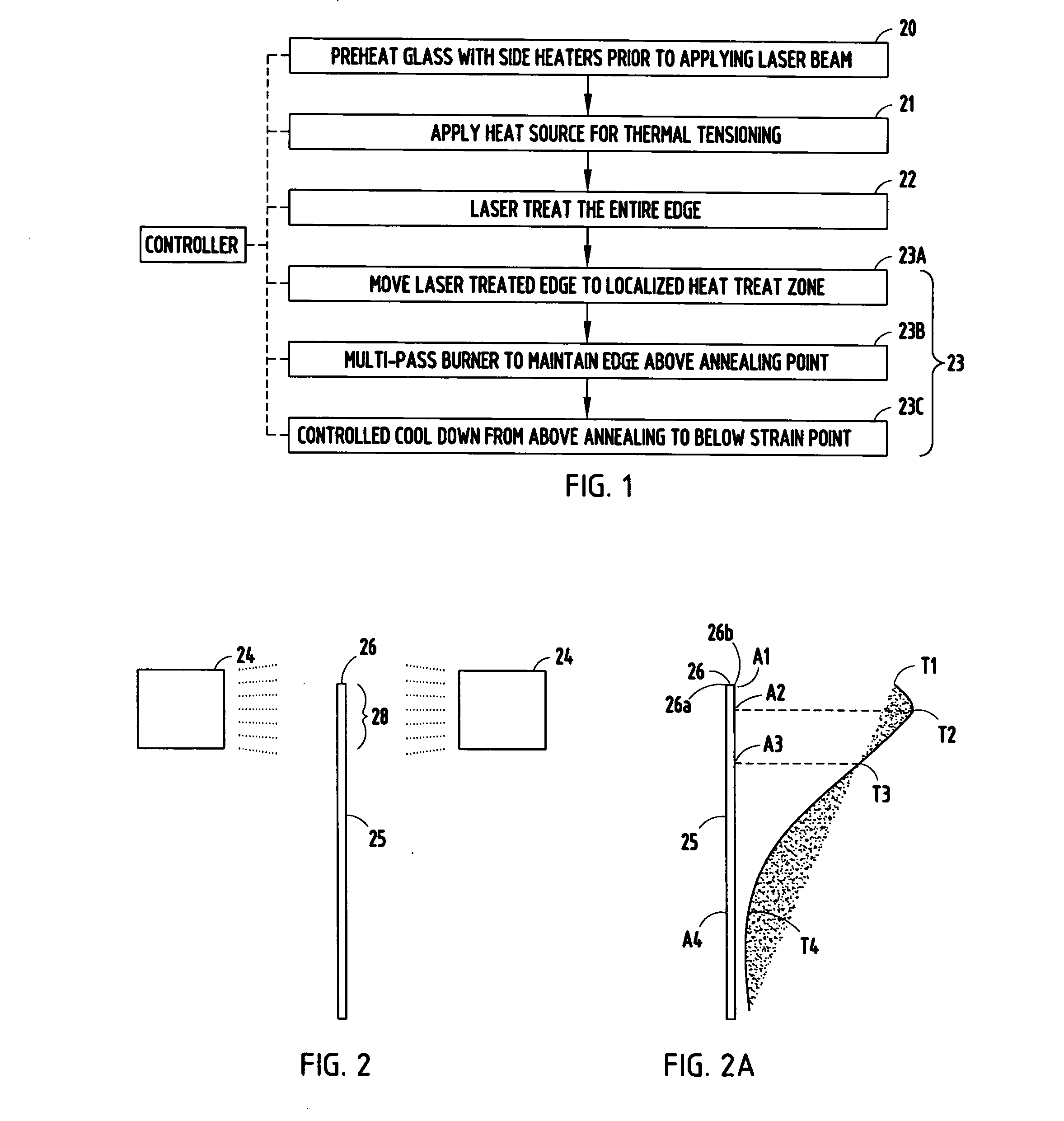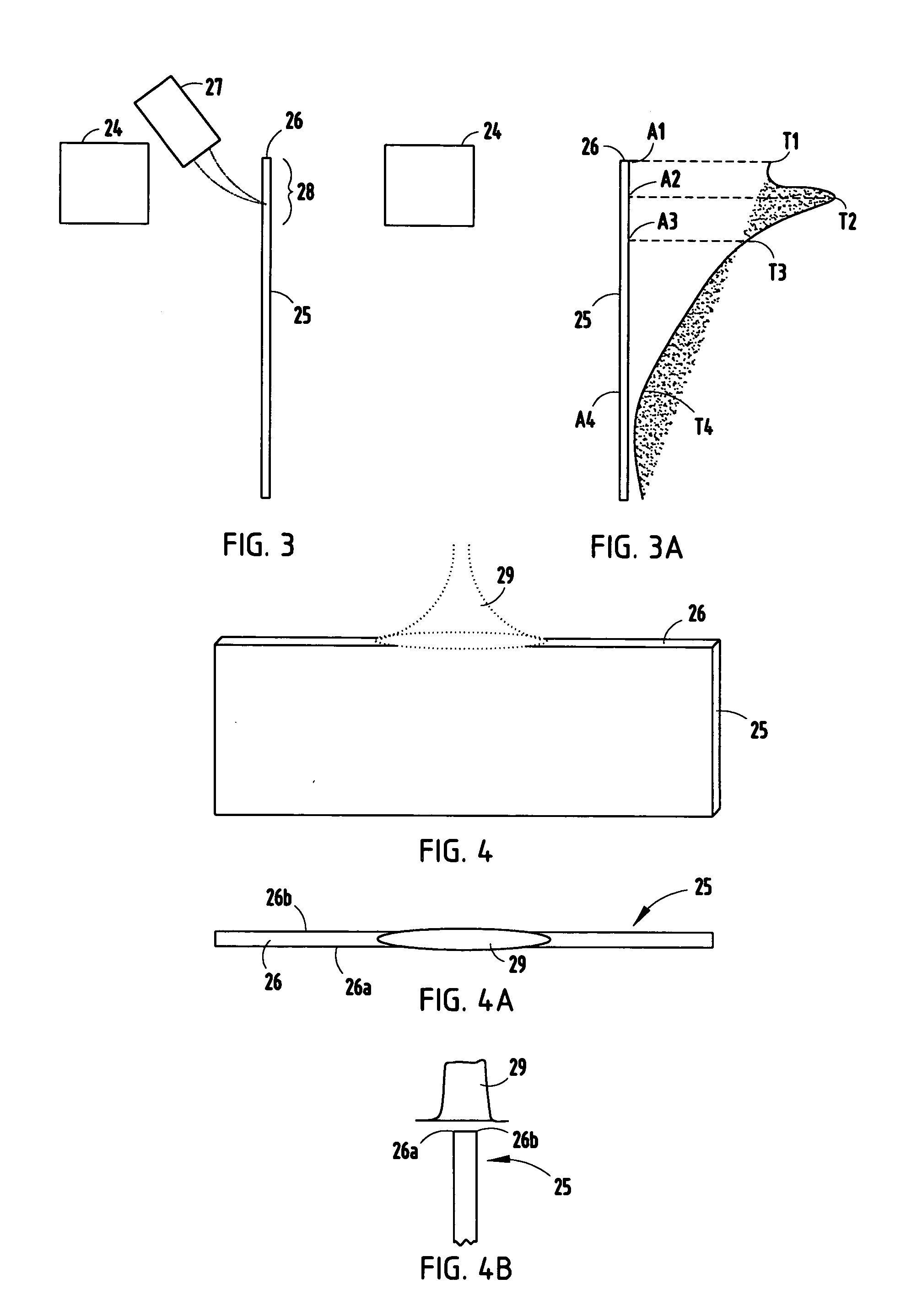Thermal tensioning during thermal edge finishing
a technology of thermal edge finishing and tensioning, which is applied in the direction of glass tempering apparatus, electric/magnetic/electromagnetic heating, manufacturing tools, etc., can solve the problems of high residual stress in glass, limited stress relief that can be obtained from glass optical properties, and cannot disclose how or if residual stress is relieved. , to achieve the effect of reducing residual tensile stress
- Summary
- Abstract
- Description
- Claims
- Application Information
AI Technical Summary
Benefits of technology
Problems solved by technology
Method used
Image
Examples
Embodiment Construction
[0023]In the following detailed description, for purposes of explanation and not limitation, example embodiments disclosing specific details are set forth in order to provide a thorough understanding of the present invention. However, it will be apparent to one having ordinary skill in the art having had the benefit of the present disclosure, that the present invention can be practiced in other embodiments that depart from the specific details disclosed herein. Moreover, descriptions of well-known devices, methods and materials may be omitted so as not to obscure the description of the present invention.
[0024]The illustrated process (FIG. 1) for thermal edge finishing includes four major steps: pre-heat (step 20), thermal tensioning along glass edge (step 21), laser edge finishing (step 22), and post-laser localized heat treatment / annealing (step 23). By raising a temperature of the glass inboard of the edge of the glass, the glass material along the edge is thermally tensioned. As ...
PUM
| Property | Measurement | Unit |
|---|---|---|
| depth of penetration | aaaaa | aaaaa |
| thick | aaaaa | aaaaa |
| speed | aaaaa | aaaaa |
Abstract
Description
Claims
Application Information
 Login to View More
Login to View More - R&D
- Intellectual Property
- Life Sciences
- Materials
- Tech Scout
- Unparalleled Data Quality
- Higher Quality Content
- 60% Fewer Hallucinations
Browse by: Latest US Patents, China's latest patents, Technical Efficacy Thesaurus, Application Domain, Technology Topic, Popular Technical Reports.
© 2025 PatSnap. All rights reserved.Legal|Privacy policy|Modern Slavery Act Transparency Statement|Sitemap|About US| Contact US: help@patsnap.com



